Evergreen Escape has tailored a 12-day combined cultural and safari trip, which gives you the chance to experience the best national parks in the southern part of Africa spiced up with visits to local tribes in South Africa and Zimbabwe.
Without exaggeration, Johannesburg can be said to be the city of contrasts. “Joburg”, as it is often referred to, is South Africa’s largest city with a population of approx. 6.3 million people.
When you have passed through passport control at the airport, your tour guide, local tour guide and driver will be ready to welcome you. You will be driven to your hotel, so you have the opportunity to have a refreshing bath before we go out to experience the first highlight of the journey.
We are going to visit the famous and infamous township Soweto and get a little insight into the daily life here. Originally the area was only intended as a temporary residence for the miners, but in 1923, as part of the white government’s infamous Urban Areas Act, it was transformed into a ghetto for the black population of Johannesburg. Soweto ended up becoming the largest black town in South Africa, but until 1976 the inhabitants could only have the status of “temporary residents” without legal rights.
On our tour around Soweto, we will visit Nelson Mandela’s house. Already as a young law student, Mandela became involved in the freedom struggle against the white apartheid rule. The house has become a museum that tells the story of the Mandela family in sound, pictures, and film. Vilakazi Street is also the only street in the world that has housed 2 recipients of the Nobel Peace Prize. Founded in 2001, the museum is recognized as the leading museum in the world dealing with the history of South Africa from the 20th century.
In the courtyard of the museum there are 7 tall concrete pillars that symbolize the 7 most important pillars of South Africa’s constitution – democracy, diversity, reconciliation, responsibility, freedom, equality, and respect.
An eventful day ends with an authentic African experience when we have dinner and spend the night in Lesedi Cultural Village. The area consists of five traditional villages – Xhosa, Zulu, Pedi, Basotho, and Ndebele. Listen to the traditional music being played and the fascinating stories told by the people of Lesedi. Enjoy the local South African tribal gatherings and experience some traditional dancing.
After a good night’s sleep, it’s time for a day dedicated to nature experiences. We are going out on South Africa’s most beautiful nature route – the Panorama route – in the north-eastern part of the country. The most fascinating area of the route is the spectacular Blyde River Canyon. The 25-kilometer-long and 1.4-kilometer-deep gorge is the second largest canyon in Africa and is one of nature’s great wonders on the continent.
In the area we find God’s window. When you look through the «window» you will understand why it bears this name – with magnificent views of canyons, rock formations and waterfalls, this is truly an area of breath-taking scenic splendour. The Three Rondavelles are three very beautiful and eye-catching rock formations that look similar to the round huts we find in many local villages around Africa.
We will also experience the geologically very breath-taking Bourke’s Luck Potholes, which are cylindrical rock sculptures formed by water erosion over thousands of years. The somewhat peculiar name comes from the local geologist and gold digger Tom Bourke, whose luck it was to find gold in the area in the 1880s.
Today we have to get up early and have a full day’s game drive in South Africa’s largest national park, which has an area of almost 20,000 km². Krüger National Park was established in 1926 and opened its gates to the first 3 guests in 1927.
In Day, the park boasts one of the world’s largest concentrations of animal species – more than 140 different mammal species, more than 100 different reptile species and more than 500 bird species. The landscape in the park is very varied and there are many permanent rivers and waterholes, which is why many of the species have their densest populations here – 90,000 impalas; 27,000 buffaloes; 18,000 zebras; 12,000 elephants; 9,000 rhinos; 5,000 giraffes; 3,000 hippos; 1,600 lions and 1,000 leopards.
The term dates back to the 1800s, when big game was hunted on foot. The hunters judged that these five animals were the most difficult and dangerous to kill. So even though the term originates from a bygone era, nothing has changed in that it is still an achievement and requires a lot of luck to spot these five animals.
But regardless of which animals we experience on today’s game drive, it is always a huge experience. Or the giraffes, who stretch just that little bit further to be able to eat the leaves from the characteristic acacia trees. Or the large herds of zebras, where each and every one of their patterns is as unique as human fingerprints. Or the cheetah, which with its slim and athletic body is the world’s fastest mammal. We drive around in an open 4-wheel drive to better enjoy and observe the wildlife.
We eat breakfast early and continue our journey north through the Krüger National Park. The area is dominated by the mopane tree, which with its characteristic «butterfly-shaped» leaves is a treat for elephants. The area is also known to be home to large herds of buffalo, lions, and the African wild dogs.
We leave the park and drive towards the spectacular Soutpansberg mountain range in the northern Limpopo province, known as the gateway to the three neighbouring countries – Mozambique, Zimbabwe, and Botswana.
No trip to the African continent is complete until we have met the local population on their terms – an authentic encounter far removed from classic tourism. The Tsonga people are made up of several different groups, including the Shangaan people. The formation of the 2 peoples is, like so many other tribes from southern Africa, influenced by the infamous and successful Zulu king Shaka. His uncle Dingiswayo, who was the leader of a small chiefdom, was killed by a group of enemies. In his efforts to avenge the killing, Shaka appointed the Zulu warrior Shoshangane as his general. With him at the head, Shaka wanted to conquer and defeat the surrounding chiefdoms, e.g., in Mozambique, where the Tsonga people resided. In Day, the tribe is found in Mozambique, south-eastern Zimbabwe, and north-eastern South Africa.
In the village of Mphambo we will experience the same friendliness and hospitality that has always characterized the tribe. The men typically look after the cattle, while the women look after the cultivation of the land. When we arrive, we will meet the local chief who will introduce us to the village and its residents. While we are offered various local dishes, we get a unique insight into the everyday life of the villagers, where they tell us about their culture, customs, history, their daily life, and relationship with their ancestors.
We will meet the local medicine man, who will give us a more detailed introduction to how they use plants and herbs to prevent and cure various diseases.
After breakfast, it is time to say goodbye to South Africa and continue the journey further north to Zimbabwe. We cross the border at Beit Bridge. The border formalities may take a little longer than we are used to, but it just adds a little extra spice to the experience account.
Together with a local guide, we will take a big step back into the past and experience the origins of what we in Day know as Zimbabwe. The name Zimbabwe is derived from “Dzimba Dzembahwe”, which in the local Shona language means «stone houses without the use of mortar». The name refers to Great Zimbabwe, an ancient city in present-day Zimbabwe, which was built from the 11th century and continued until it was abandoned in the 15th century. Among other things. Arab merchants bought up ivory and gold on their way to the coast.
We continue our journey to the lodge for the night – Lodge at the Ancient City. It is built on a rocky outcrop and has a wonderful view across the valley towards the Great Zimbabwe ruins. The cabins are decorated in such a way that we can almost feel like an African king for a night.
After a wonderful breakfast, it’s time to shake off yesterday’s dust and continue the journey towards Bulawayo, which is the country’s second largest city after the capital Harare. On the outskirts of the city is Makokoba, which was the first black township in the city. The township is named after Mr. Fallon, who was the first commissioner in the area, and who usually walked around with a cane (“ukukhokhoba” in the local Ndebele language). The word describes the noise of the cane hitting the ground ko-ko-ko.
No trip to Zimbabwe would be complete without visiting a local urban community and getting a real feel for their day-to-day life. So, this morning we are going out to experience the everyday life of the local inhabitants of Makokoba. It is estimated that approx. 20,000 from the Ndebele tribe in the township. Despite the economic and social challenges, it is also a township characterized by hope, where artists, writers, musicians, and athletes flourish against all odds.
On the tour, we get the opportunity to experience the large market, where all kinds of local and traditional things are sold, including traditional medicine. We will see some of the small bars and restaurants, and we will experience the local people up close.
After breakfast it is time to go on a game drive in Matobo National Park. The scenery in Matobo is literally breath-taking. A land area characterized by massive kopjes, which are small, rounded peaks of granite. Matobo National Park is located right in the heart of the Matobo Hills and is the country’s oldest national park from 1926. In 2003, the area was added to UNESCO’s world heritage list.
The park is best for spotting both the white and black rhino. The reason why the rhinoceros are called black and white is not, as one might be led to think, that they are of different colours. One type of rhino’s head was wider than the other. This word was heard as “white”, and thus the two types of rhinoceros were named and coloured after a translation error.
As part of our visit to the park, we help support the “Matobo Rhino Trust Program”, which means that extra work is done to protect the horned animals from extinction.
It will be possible for us to leave the car and experience the thick-skinned giants on foot in a fenced area that acts as an intensive protection zone. It is an experience out of the ordinary and compared to sitting in a safari vehicle, it is far more rewarding to meet the animals on their terms, as participants in their world.
The park is also home to the largest number of leopards in Zimbabwe, but they are very shy, so spotting them requires a little extra luck. After our game drive, we will go out to visit a small local village, located just outside the park.
The village is inhabited by people from the Ndebele tribe – the same tribe we met in the township of Makokoba. Ndebele constitute Approx. 15% of the population and is the second largest tribe after the Shona tribe making up Approx. 70% of the population of Zimbabwe.
On our tour around, we hear more about life in the village and get a completely unique insight into a daily life, which is so far from ours. After the visit to the village, we will go out to experience the Matobo Hills on foot. On our walk we will visit the burial site of Cecil John Rhodes.
After breakfast, it’s time to drive towards the country’s largest national park, Hwange National Park. Hwange National Park is one of the best national parks on the African continent and should be on every animal lover’s list. With its 15,000 km², this huge reserve is one of Africa’s most animal-rich national parks and is famous for its large herds of buffalo and elephant.
The park is located in the north-west of the country and borders Botswana and the dry sands of the Kalahari Desert. The area once belonged to the nomadic Sanfolk , who lived off the large herds of big game. In time, however, the San people were displaced by the stronger Ndebele tribe, who’s chief Mzilikazi declared the area his hunting ground. When the whites came to the country in the 19th century, they started shooting the big game in their hunt – or rather predatory – for horns, ivory, and animal skins. It took a long time before the authorities noticed the harmful development, and only in 1928 did they declare the then Wankie National Park a reserve.
The reserve was effectively created when the land was considered unsuitable for agriculture with its poor soil and scarce water supply. The first inspector for the area, Ted Davidson, was able to quickly ascertain that there was not much big game left – the number of elephants was below 1000, and the black and white rhinoceros completely extinct. Ted Davidson created 60 artificial waterholes that helped attract wildlife from the Kalahari Desert. In 1949, the reserve became Hwange National Park. The idea was to save the endangered animals – especially the elephants – and at the same time attract tourists on their way to and from Victoria Falls, which was – and still is – Zimbabwe’s biggest attraction.
The biological diversity is enormous with over 100 different kinds of mammals. The park is also home to The Big Five. In addition, there are regular sightings of cheetahs and Africa’s largest population of the endangered wild dog. The bird life is at least as rich as the animal life. Over 400 different species of birds live in the park, from the large and not so charming vulture to the beautiful, purple-breasted crow. Even the park’s trees are interesting. Both the special Zimbabwe teak tree, the gigantic red mahogany and African ebony grow here.
Today we have to get up early to go on a game drive and experience the animals just after sunrise. We drive around in an open 4-wheel drive, so we have the best conditions for experiencing wildlife.
Hwange today has the country’s largest concentration of animals. The elephants in particular have benefited from the protected area and the artificial watering holes that have been constructed. The park today has so many elephants that they almost pose a problem. But they are also the park’s biggest attraction.
The national park is a wonderful mix of open savannah, forest, and semi-desert. Such a varied landscape provides living conditions for a number of animals that are not found in many other places in Africa. Among other things, the park is home to the “Big Five Antelopes”: eland – the largest of them all; kudu – with the world’s longest horn; oryx – whose horn in the Middle Ages was marketed as being from the unicorn; the roan – which is almost extinct, and the sable antelope – with its backward-pointing horns and where the males’ skin is jet black.
The many watering holes scattered around the park make it easier to find the animals, and you can sit for hours near watering holes and enjoy the spectacular sight. Watchtowers and hiding places have also been built at several waterholes.
After breakfast it is time to drive further north and cross the border into Botswana to experience Chobe National Park. We drive around in an open 4-wheel drive, where we can enjoy the animals in their natural habitat.
Chobe National Park was the first national park in the country and, with its area of 11,700 km², is Botswana’s third largest, but the most biologically diverse. It is also the park in the world that is home to the most elephants. It is estimated that there are around 45,000 elephants in the park out of Botswana’s population of more than 100,000 elephants.
In addition, you can see large herds of buffalo, various antelopes, zebras, giraffes, warthogs, wildebeests, hyenas, lions, and leopards. We drive around in the early morning hours, as most animals are grazing at this time, so the chances of spotting them are optimal. Lions and the other big cats that like to lie in the shade of the bushes are also often spotted more easily.
After lunch, it’s once again time to find the camera and get water under the keel when we go out to experience the wildlife on a boat trip on the Chobe River. The open river landscape makes it possible to experience the animals up close when they go down to the river to drink. It is a very special sight when the elephants bathe in the river or even swim to the other bank, where we can just make out its back and trunk sticking out of the water.
After a delicious breakfast, it’s time to drive towards the impressive Victoria Falls. Before we get to the waterfall, we make a stop at the big Baobab tree, which is probably both the oldest and largest Baobab tree in Zimbabwe. The tree is estimated to be at least 2000 years old and has an impressive girth and height – 22.40 meters in circumference and 24 meters high. A traditional legend tells how the baobab tree got its appearance: «God gave each animal a tree to plant, but the hyena had not been given a tree. God said to the hyena: “Here you have a seed, you must plant it, then you will also have a tree”. The hyena was not particularly clever, so when it had to plant the seed, it turned it upside down. Therefore, it looks as if the baobab tree has its roots in the air and its crown in the ground”.
Many call it the tree of life, as it grows so slowly that it takes 1000 years to reach its full size. It is one of the natural wonders of the world and with its width of 1.7 km and a drop of 128 meters is very spectacular. It was the English explorer David Livingstone who, as the first white man on November 17, 1855, “discovered” the waterfall and named it in honour of the then English Queen Victoria.
The indigenous people from the Tonga tribe called the waterfall Mosi-oa-Tunya, which directly translates to «the smoke that thunders». A very telling name, as especially in the rainy season it sounds like a strong thunder from the gorge, when the water masses hit the bottom and throw up a cloud of water up to 400 meters high. The Tonga tribe believed that the thunder and the huge flood were caused by evil spirits. Today you will discover the magic yourself…
After we have enjoyed the guided tour around the waterfall, heard a little more about the geological wonder and the legends that surround it, it is time for the afternoon experience. When we about the talk Victoria Falls, 2 things often come to mind: Of course, the world-famous waterfall, and then the almost equally legendary hotel Victoria Falls Hotel. Built by the British in 1904, the hotel was originally intended as accommodation for the workers who worked on the railway from Cape Town to Cairo. As part of the railway system, a bridge was to be built over the mighty Zambezi River. Cecil Rhodes, who could see that this railway would strengthen the British Empire, wanted the bridge to be built in a place where the water spray from the waterfall would fall on the passing trains, which is the reason why the bridge is so close to the waterfall.
Enjoy the last morning atmosphere in southern Africa. Take a dip in the hotel swimming pool or buy the last souvenirs before we get ready to go to Victoria Falls Airport to begin your journey home. Tired, but filled with lots of lovely holiday memories, new friendships and, of course, unique spot shots.
Get all the help, call +254 791 918888 or email us at info@evergreen-escape.com.

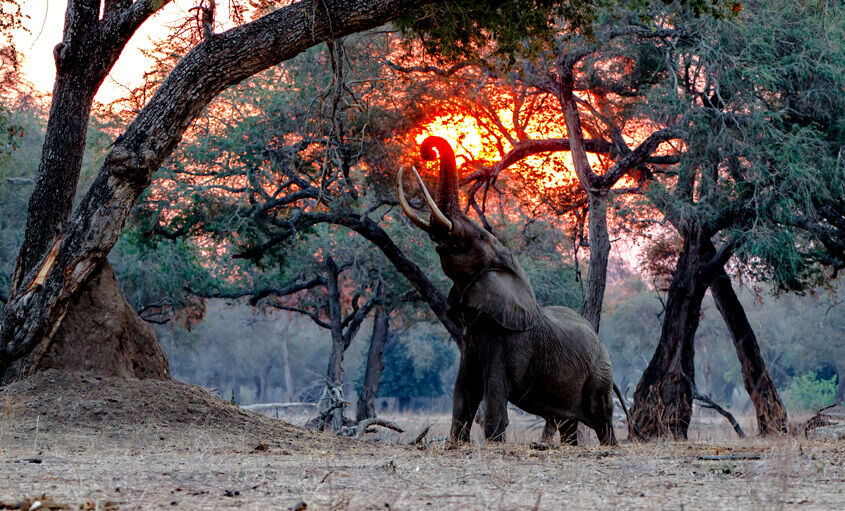
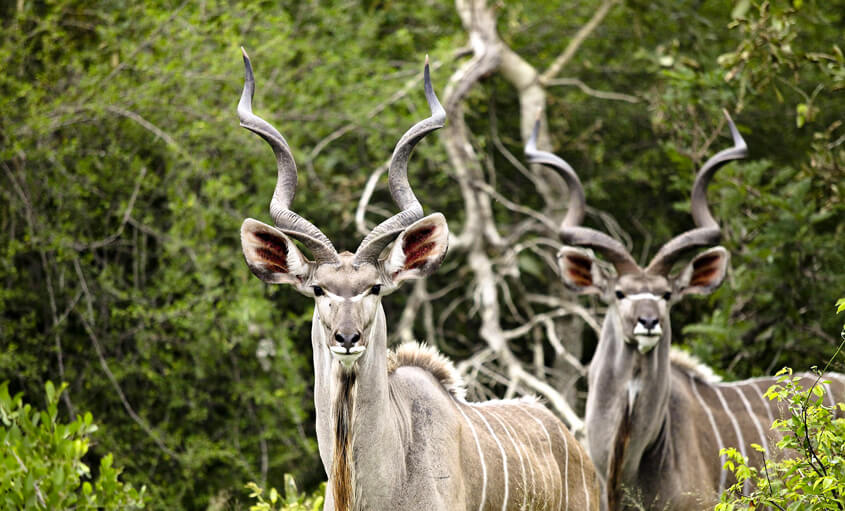
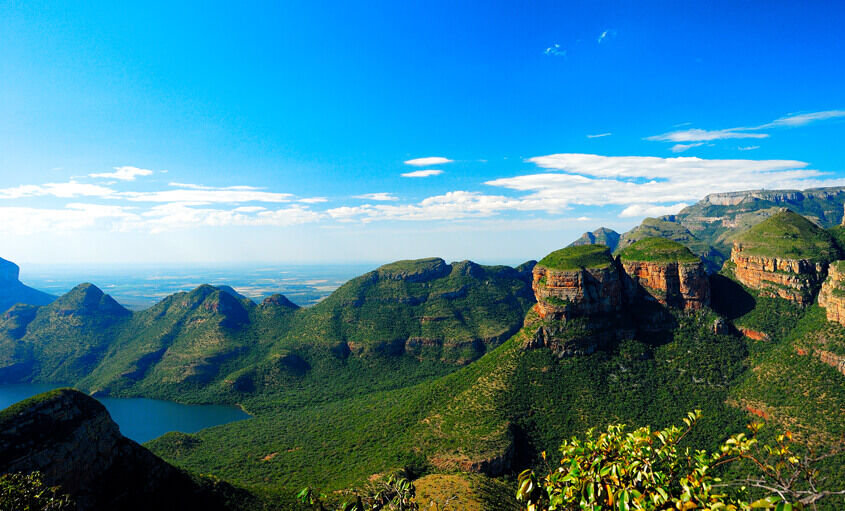
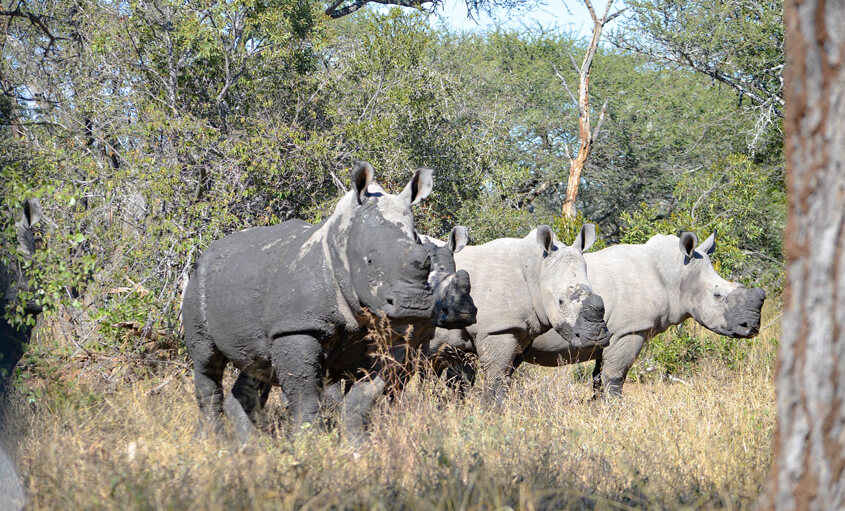
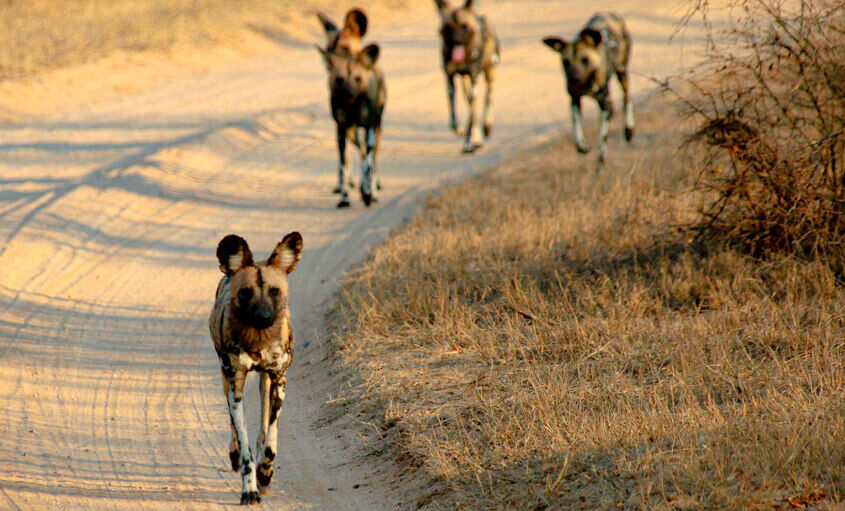

Whether you’re planning a safari, or have a question about traveling to Africa, our Travel Specialist would love to respond to your inquiries. Drop us a message.
Thank you for considering this safari. We look forward to having you on this wonderful safari. Complete the form below and we will be in touch to finalise arrangments.